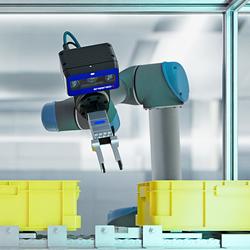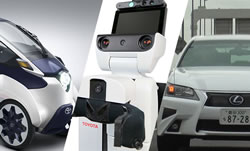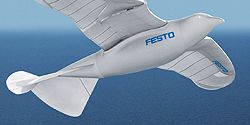Alphabet Shakes Up Its Robotics Division
From The New York Times:
Google’s robotics division has been plagued by low morale and a lack of leadership since the unit’s founder left abruptly in 2014. Now Alphabet is cleaning it up.
Over the last two months, Alphabet, the new holding company that separated Google from its collection of speculative projects, has reframed the robots effort, moving it from a stand-alone division inside Google to a piece of the X research division. The company has also hired Hans Peter Brondmo, a technology industry veteran who last worked at Nokia, to help with management...
... After starting the robotics division, Mr. Rubin quickly went on a buying spree, purchasing a number of promising companies, including Boston Dynamics, the of experimental military robots, and Schaft, an elite group of Japanese roboticists from the University of Tokyo...
... Google’s robotics effort stalled after his departure, going through a variety of leaders, including James Kuffner, a Carnegie Mellon roboticist who has since joined Toyota’s research and development laboratory in Palo Alto, and Jonathan Rosenberg, who is a troubleshooter for Larry Page, the Google co-founder who is Alphabet’s chief executive... (full article)
Robotics at the Distributed Intelligent Systems Lab at GE Global Research
At GEs Global Research Center, were also looking at the next generation of robotics - drones for aerial-based surveillance and inspection, small scale crawlers for in-situ inspection, and mobile collaborative robotics for things like machine tending in our factories.
Toyota Invests $1 Billion in AI and Robots, Will Open R&D Lab in Silicon Valley
By Erico Guizzo and Evan Ackerman for IEEE Spectrum: Today in Tokyo, Toyota announced that it is investing US $1 billion over the next five years to establish a new R&D arm headquartered in Silicon Valley and focused on artificial intelligence and robotics. The Toyota Research Institute (TRI) plans to hire hundreds of engineers to staff a main facility in Palo Alto, Calif., near Stanford University, and a second facility located near MIT in Cambridge, Mass.
Former DARPA program manager Dr. Gill Pratt, an executive technical advisor at Toyota, was named CEO of TRI, which will begin operations in January. Toyota president Akio Toyoda said in a press conference that the company pursues innovation and new technologies “to make life better for our customers and society as a whole,” adding that he wanted to “work with Gill not just because he’s an amazing researcher and engineer, but because I believe his goals and motivations are the same as ours.” Cont'd...
Festo's R&D Timeline - Part 3 - 2010 & 2011
Part 3 includes more bionic robots like the smartbird and a handler modeled after an elephant trunk.
Festo's R&D Timeline - Part 2 - 2007-2009
More fascinating bionics projects from Festo.
Festo's R&D Timeline - Part 1
Since 2006 Festo has been developing and supporting projects and test objects whose basic technical principles are derived from a wide variety of principles found in nature.
Records 31 to 36 of 36
Featured Product

3D Vision: Ensenso B now also available as a mono version!
This compact 3D camera series combines a very short working distance, a large field of view and a high depth of field - perfect for bin picking applications. With its ability to capture multiple objects over a large area, it can help robots empty containers more efficiently. Now available from IDS Imaging Development Systems. In the color version of the Ensenso B, the stereo system is equipped with two RGB image sensors. This saves additional sensors and reduces installation space and hardware costs. Now, you can also choose your model to be equipped with two 5 MP mono sensors, achieving impressively high spatial precision. With enhanced sharpness and accuracy, you can tackle applications where absolute precision is essential. The great strength of the Ensenso B lies in the very precise detection of objects at close range. It offers a wide field of view and an impressively high depth of field. This means that the area in which an object is in focus is unusually large. At a distance of 30 centimetres between the camera and the object, the Z-accuracy is approx. 0.1 millimetres. The maximum working distance is 2 meters. This 3D camera series complies with protection class IP65/67 and is ideal for use in industrial environments.
Robotics and Automation - Featured Company

Palladyne AI Corp.
Welcome to Palladyne AI, where we unleash the power of robotics with our revolutionary AI software platform for the physical world. In a world where robots are progressing toward human-like adaptability, seamlessly navigating dynamic environments and conquering complex tasks with unparalleled efficiency, Palladyne AI stands as the beacon of innovation toward that future reality. Through our cutting-edge artificial intelligence (AI) software platform, we are redefining the boundaries of robotics. Our goal is simple: Help companies with autonomy in their robotics operations by addressing key challenges of traditional robotic deployments.





